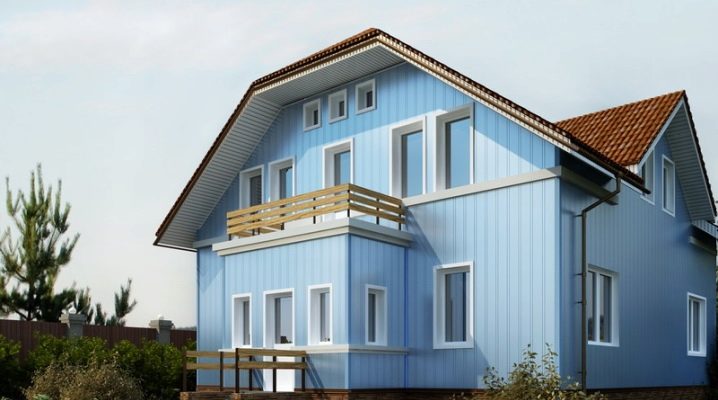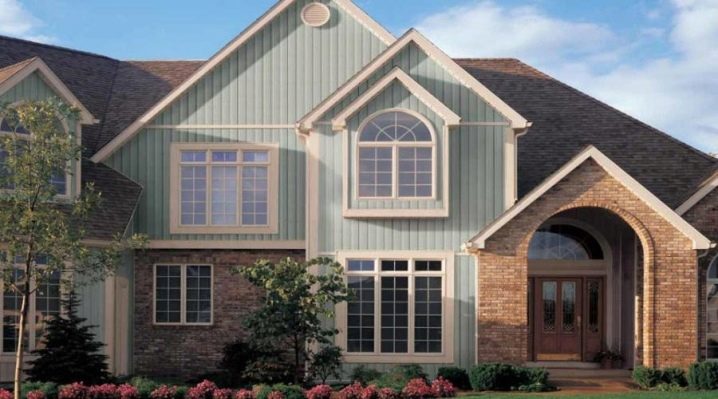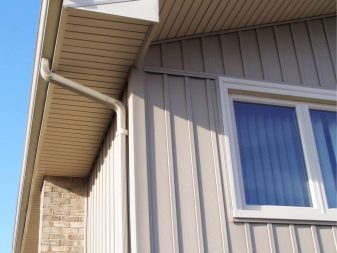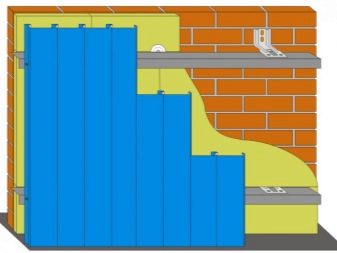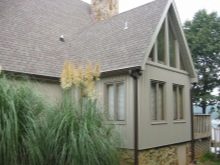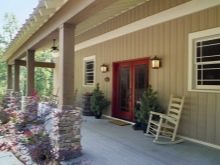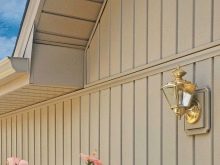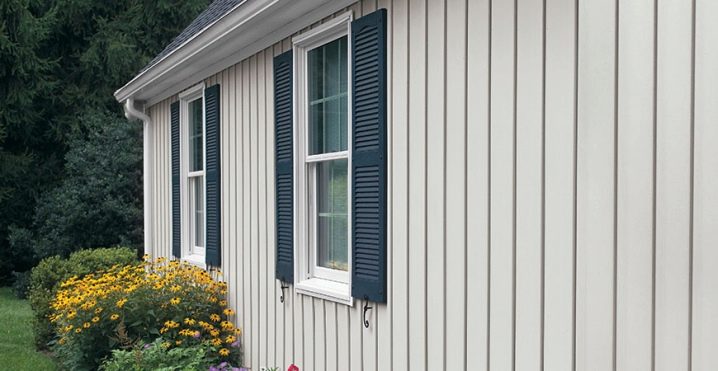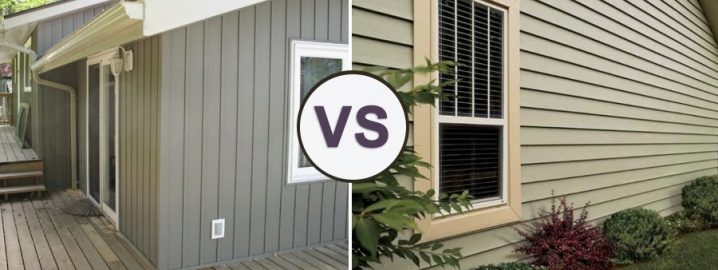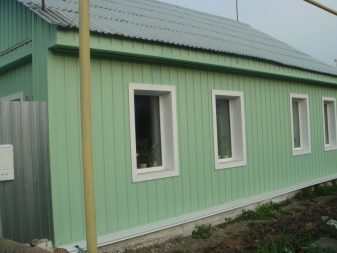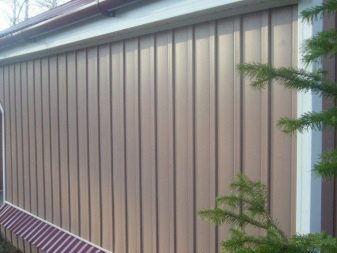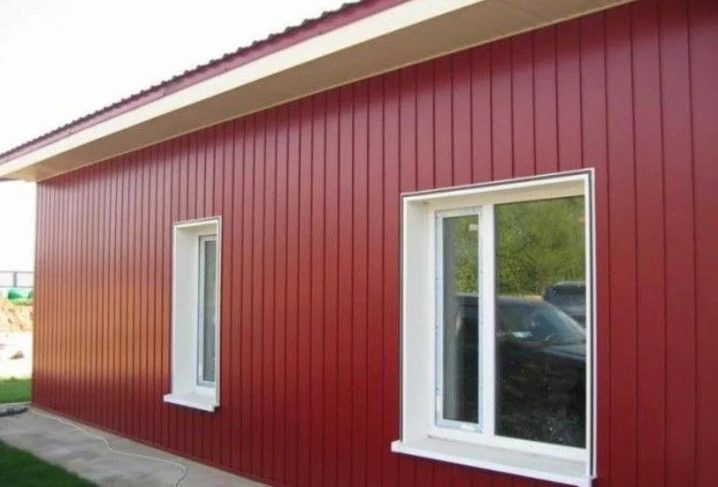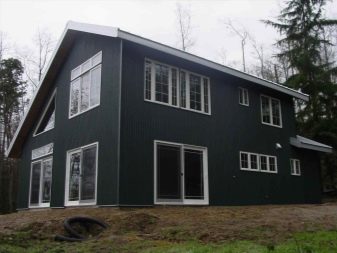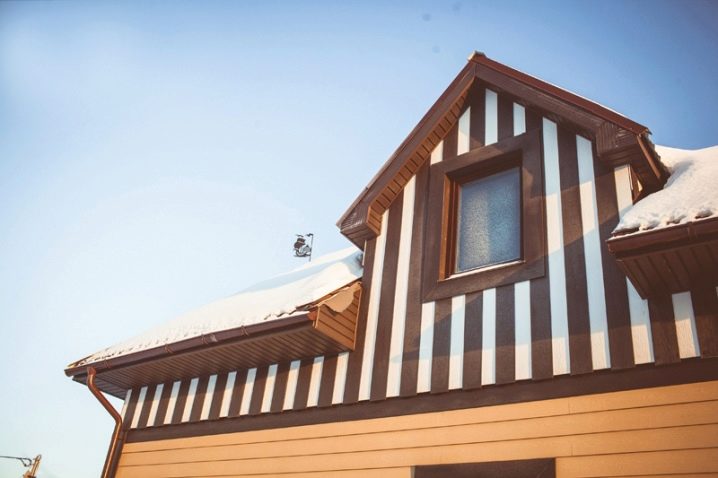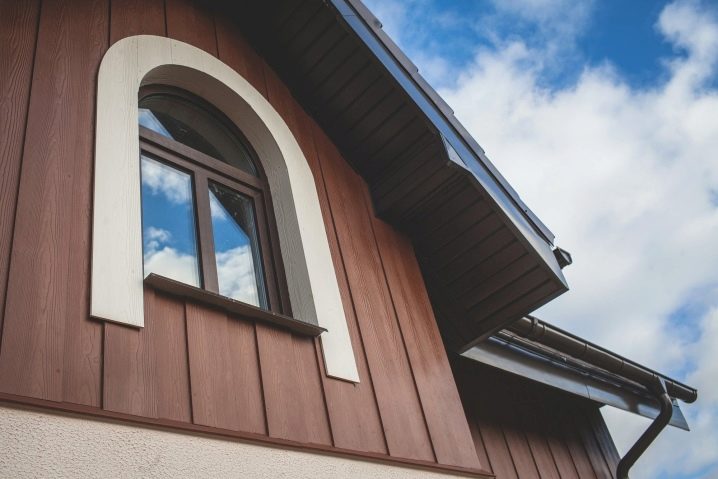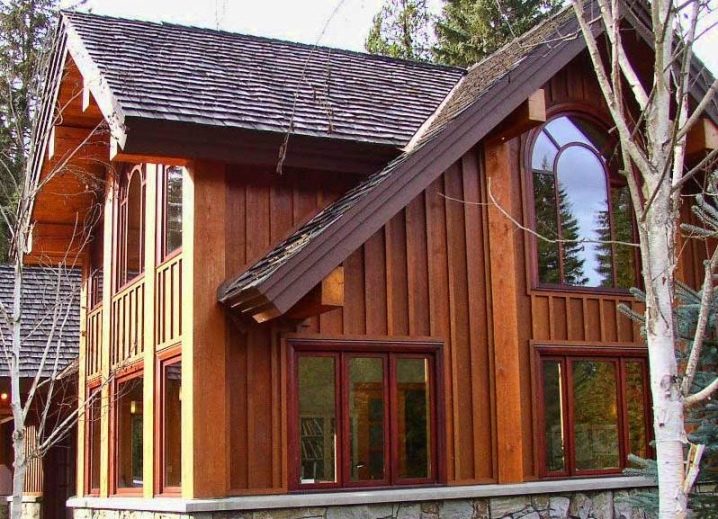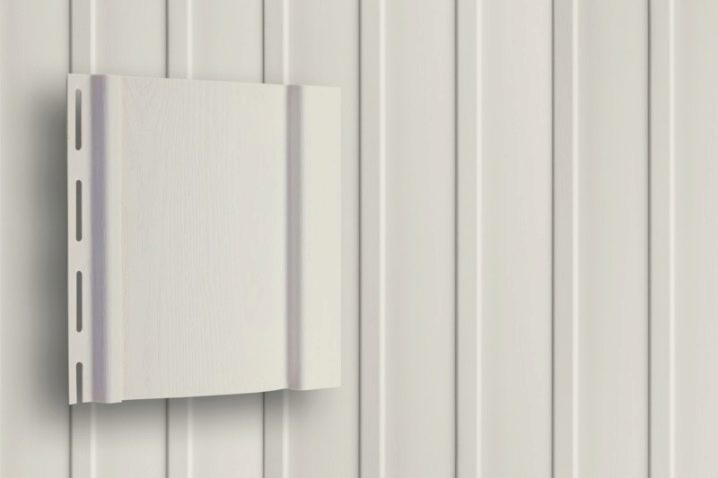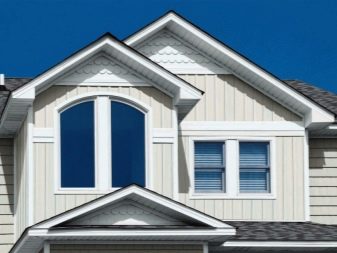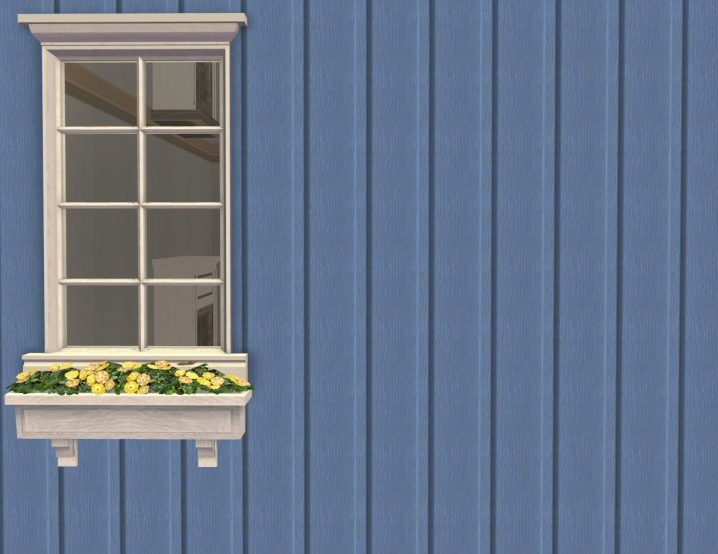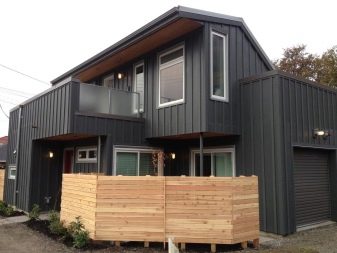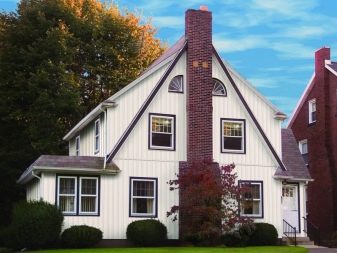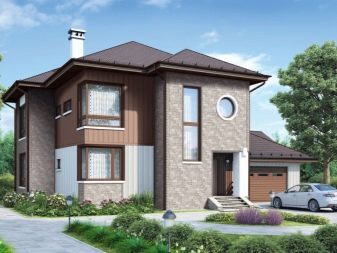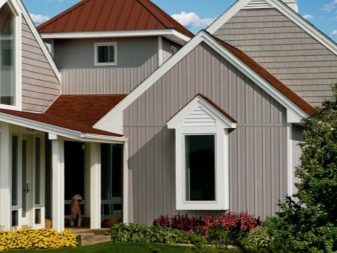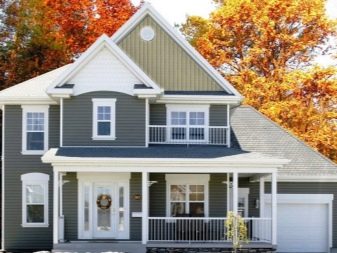Vertical siding: features and benefits
Siding is a popular cladding material for the facade of a building. A few years ago, the vertical version of it was virtually unknown, horizontal siding was used everywhere. However, more recently, the vertical analogue very confidently entered the construction market and now it is rather another kind of siding than just an alternative to a horizontally oriented material.
Material definition
Siding is a material used for exterior (less often - internal) finishing of a building. It imitates the boarding, representing a separate strip. The latter are quickly and securely fastened to each other thanks to the latches-latches. The siding is fixed to the building surface by means of nails for which perforation is provided in the material.
The popularity of the material due to the fact that it allows you to quickly transform the appearance of the building, hiding flaws and irregularities of surfaces. It is easy to install and does not require special training.
Due to the presence of a special polymer paint that protects against damage and prevents the appearance of corrosion, siding maintains a flawless appearance and technical characteristics for several decades of operation.
It is worth noting the richness of the choice of material - the variety of textures, color and size decisions allow you to get a stylish and original building that fits well into any landscape.
Special features
Depending on the direction of the "board" in the space emit siding horizontal and vertical. The length of the latter can reach 3000, 3050 and 3100 mm. The width of the profile is also variable - 160, 180 and 250 mm. Thickness is 1, 1 or 1.2 mm. If we are talking about metal guides intended for finishing the base, then their thickness can reach 3 mm.
It is important to understand that horizontal and vertical siding have different dimensions and configurations.
It is unacceptable to mount the “verticals” in the horizontal direction, since this is fraught with water leaking and reducing the life of the material.
The differences between the two types of siding relate and edging profilesthat fill the joints between the profiles. For each type of material has its own edging profiles. Unlike horizontal analogs with perforations for condensate drainage in the lower part, vertically oriented panels do not have one.
The recesses and puzzles of vertical siding are arranged in such a way that moisture, without lingering on the surface of the profile, flows down. Due to the flatter surface and the absence of protrusions on the profile does not accumulate dust and dirt.
Experts say that vertical siding tolerates temperature “jumps” more easily.
Kinds
Depending on what material underlies, vertical siding can be of several types.
Vinyl
The basis of the material is polyvinyl chloride (PVC). It has low weight and is characterized by increased flexibility, which gives a certain freedom of action during installation. That vinyl siding pleasantly surprised by the variety of colors. In the process of manufacturing, it is possible to add coloring pigment of any shade.
Due to its low weight, the material does not give a large load on the walls and the foundation of the building.
It is important that the product is environmentally friendly; during its operation no toxins are emitted into the atmosphere. The temperature range of operation ranges from -50 to +50 degrees. PVC siding is resistant to acids, but does not have an increased resistance to mechanical damage and shock. Some of its species are burning.
Plastic
A variety of plastic siding is acrylic. It is superior to PVC in terms of frost resistance, does not fade when exposed to sunlight, and its service life is about 50 years. Naturally, the cost of acrylic siding is higher. To obtain a positive effect, vertical plastic siding requires the use of external insulation.
Metal
Made of aluminum or galvanized sheets, this siding is characterized by increased strength in combination with the lightness of the material (although its weight is somewhat greater than the weight of the plastic counterpart). A special coating on the outside ensures the protection of the material against corrosion and ensures a long service life (up to 50 years).As a rule, metal vertical siding is used for cladding multi-storey buildings with increased wind load, in a private household - for the design of courtyards and garages.
The outer surface of metal profiles is coated with varnish, which should be updated every 3-5 years of operation. This will preserve the technical characteristics of the material and extend its service life.
This type of vertical siding is much more durable compared to the plastic counterpart.therefore, its use is welcomed when facing the basement and the lower parts of the facade.
Ceramic
"Vertical" on the basis of clay and modifying additives is a ceramic siding. It is characterized by environmental friendliness and durability (achieved due to high-temperature roasting of raw materials), low weight and affordability. Ceramic “board” imitates natural wood, therefore buildings decorated with “ceramics” look expensive and noble.
Cement
Cement-based siding is a very fragile material that can crack from a slack impact.To reduce this disadvantage, raw cellulose fiber is added to the composition. Due to this, the “board” acquires monumentality and increased strength.
It is characterized by fire safety and long service life.
The front side of such vertical siding imitates brickwork or wood surface, which allows you to create exquisite exteriors.
Wooden
It is based on solid wood, part of the rounded log or glued wood fibers, which leads to the high cost of the material. It has an attractive appearance and characteristic for wood products texture, authenticity. However, it requires constant care - the application of compounds that prevent fire and swelling from moisture, protecting against insect pests.
Despite the regular concern for wood siding, its service life is much less unparalleled.
The most widespread vinyl, acrylic and metal types of vertical "boards". All other materials, theoretically, may have a vertical directivity, but in practice their installation is hampered by the large weight of the profiles.From wooden siding refuse because of its impracticality and high cost.
Benefits
Vertical siding is characterized by many advantages.
- It has high strength, is resistant to atmospheric and acid effects. As practice shows, it is better able to withstand temperature extremes.
- Due to the peculiarities of the configuration of the material, namely the absence of protrusions and recesses, moisture does not linger, flows down the surface of the vertical siding. This eliminates the risk of water leakage, damage to the insulation.
- The absence of protrusions also ensures the protection of surfaces from the accumulation of dust and dirt. A little rain is enough to clear the surface of dust and re-delight the owner with an attractive appearance.
- Vertical siding is durable to loads, and the metal profile is also characterized by resistance to impact and mechanical damage.
- Aggressive environments, including chemical and alkaline, are not dangerous for the material. Its service life will remain unchanged, even if there are plants and factories nearby.
- Installation of the material is quite simple, implies the presence of insulation and crates, is not much different from mounting horizontal strips. If during operation one of the metal vertical profiles has become unusable, it can be easily replaced without disassembling the lining. Unfortunately, in the case of the plastic version in practice this is not possible.
- Vertical siding is characterized by a variety of colors and textures. Vinyl varieties usually have delicate pastel shades. Acrylic, on the contrary, differ in brightness of a color palette, a glossy surface.
- The use of vertically directed profiles allows you to visually "pull out" the building, making it more refined and noble. Good stylistic effects can be achieved by combining vertical and horizontal profiles within the same facade.
Tips for choosing
When choosing a vertical siding, first of all you should make sure that the material has all the necessary certificates of quality and conformity.
If the technical documentation is OK, pay attention to the following selection criteria.
- the presence of the anti-theft lock; otherwise, the panels will rumble in the wind, and with the squally wind they risk falling off the facade;
- the thickness of the material must be at least 1 mm, otherwise the material risks quickly collapse from damage and crack in cold weather;
- computer marking is mandatory for panels from well-known brands. Their presence is an additional guarantee that you get a quality product.
Beautiful examples
Vertical siding allows you to create exteriors in both classic and modern styles. Of course, it is optimal for creating expensive, noble, refined in its brevity style, for example, English or classic.
Vertical profiles are harmoniously combined with other facade materials, for example, facing bricks. Emphasize the distinctiveness of the surfaces will play on contrasts. Against the background of vertical siding in pastel or beige colors, brick elements of a more saturated color look advantageous.
No less impressive is the combination of vertical siding, horizontal and inclined siding.It is the use of sloping profiles that allows to “dilute” the rigor of “vertical houses”. They become the part that you want to consider, add distinctiveness to the building and emphasize the originality of the structure.
On the features of the installation of vertical siding, you will learn from the following video.
